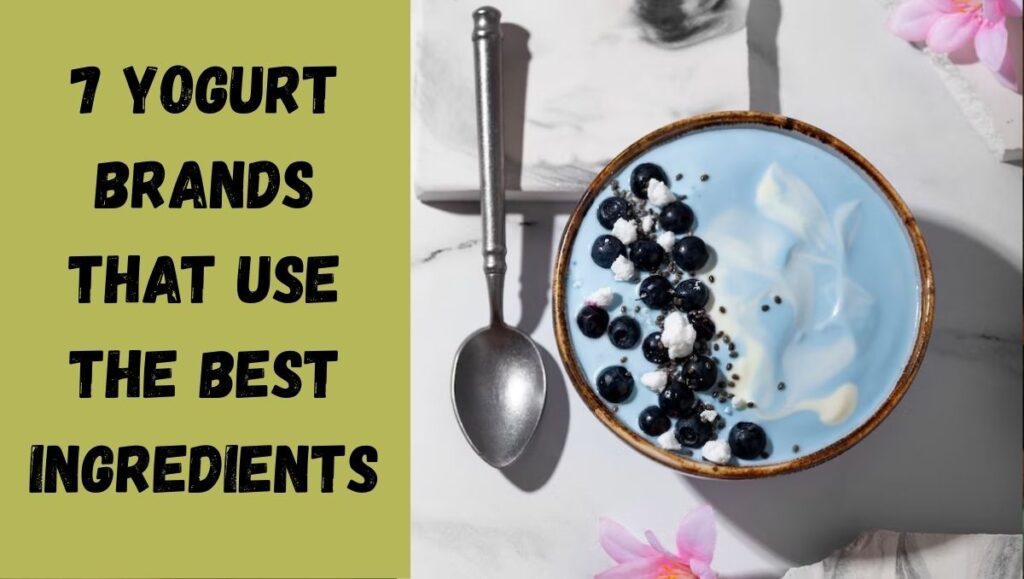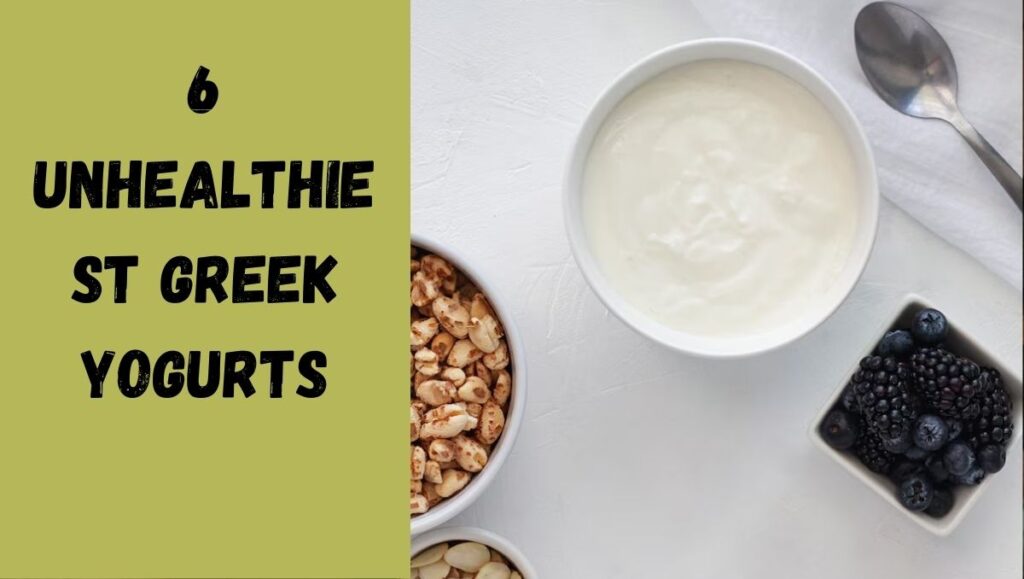Long praised as a healthy choice, yogurt is a go-to breakfast or snack with probiotics and calcium rich. Still, many of the well-known yogurts available have shockingly high sugar content—often even more than a jelly donut. In terms of context, a normal jelly donut has about 10 to 12 grams of sugar; several yogurts can pack upwards of 15 to 22 grams in one serving.
Along with the naturally occurring fruit and dairy sugars, this sugar also originates from syrups, added sugars, and sweetened fruit purees. Thus, the outcome A healthful snack can easily become a sugar bomb that raises your blood sugar, drives cravings, and adds pointless calories to your diet.
Manufacturers aiming to satisfy sweeter taste preferences and cover the tanginess of natural yogurt is driving this increasing trend. Sadly, this reduces the health advantages of yogurt and can mislead customers. Making healthier dietary decisions depends on knowing the sugar level in yogurts. We dissect 17 generally available yogurts in this article that have more sugar than a jelly donut and provide useful tips on how to enjoy yogurt without the sugar overdose.
Yoplait Original Strawberry – 18g Sugar Per Serving
Many homes have Yoplait Original Strawberry yogurt as a mainstay, usually considered as a quick and healthful breakfast or snack choice. Still, one 6-ounce dish has roughly 18 grams of sugar—far more than a standard jelly donut. Natural fruit sugars, additional cane sugar, and fruit concentrates used to improve taste and texture combine to provide this sugar.
The “original” label could imply simplicity, but the sugar level tells another tale. Yoplait touts this yogurt as a source of calcium and vitamins, however the heavy sugar levels overwhelm any advantages. Regular use of the additional sugars increases risks for obesity, diabetes, and heart disease and adds empty calories with little nutritional worth.
]Though they believe flavored yogurts are a superior substitute for other sweets, consumers sometimes undervalue the sugar in them since they can be similarly troublesome. To cut this back on the extra sugar, think about using plain yogurt and adding fresh fruit or a tiny drizzle of honey for natural sweetness.
Dannon Fruit on the Bottom – 17g Sugar Per Cup
With its sweet fruit puree layer, Dannon’s Fruit on the Bottom line appeals to nostalgia and convenience; but, the hidden sugar burden is concerning. More sugar than a jelly donut, each 5.3-ounce cup has about 17 grams. Added fruit syrups and cane sugar, the sweet bottom layer becomes a sugary treat presented as a healthy choice.
Although this yogurt offers bacteria good for digestion and protein, its high sugar level compromises its health profile. Customers that purchase this yogurt expecting a healthy snack may find the sugar amount shocking. but only should nutritionists advise careful reading the label and assessing the total sugar level, but only fat or calorie count.
To cut the sugar intake, a better choice is to buy plain yogurt and mix your own frozen or fresh fruit. This easy change lets you experience the advantages of yogurt without having to deal with the needless sugar surge that could cause weight increase and energy crashes.
Chobani Flip: Strawberry Cheesecake – 19g Sugar Per Serving
Popular for blending crunchy, dessert-like toppings with creamy Greek yogurt, Chobani Flip appeals to people looking for a snack or treat. But in a 5.3-ounce portion, the Strawberry Cheesecake flavor contains a shockingly 19 grams of sugar. Thanks in great part to extra sweeteners in the yogurt and the crumbly topping mix-ins, this degree of sugar is about twice that of a jelly donut.
Though the Flip line is promoted as a better dessert substitute with good probiotics and protein, if eaten often the sugar level could undermine your efforts toward wellness. Sweetened yogurt plus sugary toppings produces a product more like a sweet treat than a healthy snack. Those who like Chobani Flip should view it as a sporadic treat rather than a daily health food. Plain Greek yogurt combined with fresh fruit and nuts offers a better choice with comparable taste and texture and far less sugar.
Activia Lowfat Cherry – 15g Sugar in 4 oz
Thanks to its probiotic organisms, Activia is sold mostly for digestive health advantages; yet, their Lowfat Cherry yogurt has 15 grams of sugar in just a 4-ounce serving. Once more beyond what you would find in a jelly donut, this is a powerful dosage of sugar in a little portion size.
Added sugar and fruit concentrates give the pleasant taste; they boost the calorie count and offset some of the probiotic benefits for intestinal health. The “lowfat” label may mislead many consumers into believing the food is healthier, yet sometimes sugar is used to retain taste and replaces the fat.
Regular use of such products can aggravate insulin resistance and metabolic problems. If your aim is gut health, a more balanced approach is plain yogurt enhanced with fresh fruits or foods high in fibers. This allows you to enjoy probiotics free of the excessive sugar level that might cause negative effects on your health.
Yoplait Whips! Chocolate Mousse – 22g Sugar
yoplait Whips! Although Chocolate Mousse is meant to be a light, fluffy dessert substitute, just a 4-ounce portion has about 22 grams of sugar. One of the highest sugar yogurts available on the market, this sugar level practically halves that of a jelly donut.
The delicious chocolate taste and mousse texture cover the reality that this yogurt is more dessert than a health dish. The great sugar content can rapidly raise blood sugar levels and cause cravings, therefore aggravating an overconsumption cycle and energy depletion.
Children especially enjoy it because of the “Whips!,” branding and dessert-like feel, which causes dietitians great worry regarding early exposure to too much sugar. Families trying to cut sugar should treat this yogurt occasionally rather than a daily snack. Mixing plain yogurt with cocoa powder and a natural sweetener at home will produce healthier chocolate-flavored choices.
Dannon Light & Fit Greek Vanilla – 12g Sugar
With 80 calories per cup and a “light” label, Dannon’s Light & Fit Greek Vanilla yogurt caters to people watching calories. Still, it has more than a normal jelly donut—12 grams of sugar. Unlike many yogurts include natural sugars, this one also has artificial sweeteners such sucralose and acesulfame potassium to cut calories while maintaining sweetness.
Although artificial sweeteners cut calories, new studies point to possible detrimental effects on gut microbes that could keep sugar cravings intact. Many consumers purchase Light & Fit products thinking they are better for their health, however the mix of artificial sweeteners and additional sugars might compromise efforts at weight loss. A preferable option is plain Greek yogurt with cinnamon or vanilla essence boosters. This method reduces sugar and additives while nonetheless giving pleasing taste and satisfaction..
Sugar Content Comparison: Yogurt vs. Jelly Donut Table
| Yogurt Brand/Type | Sugar Per Serving | Serving Size | More Sugar Than Jelly Donut? |
|---|---|---|---|
| Yoplait Original Strawberry | 18g | 6 oz | ✅ Yes |
| Dannon Fruit on the Bottom | 17g | 5.3 oz | ✅ Yes |
| Chobani Flip Strawberry Cheesecake | 19g | 5.3 oz | ✅ Yes |
| Activia Lowfat Cherry | 15g | 4 oz | ✅ Yes |
| Yoplait Whips! Chocolate Mousse | 22g | 4 oz | ✅ Yes |
| Dannon Light & Fit Greek Vanilla | 12g | 5.3 oz | ✅ Yes |
| Average Jelly Donut | 10–12g | 1 donut | — |
Other High-Sugar Yogurts to Avoid
Many more yogurts that consumers enjoy have shockingly high sugar content outside the ones already mentioned. Because additional cane sugar and sweetened fruit purées give Noosa, renowned for its creamy and luscious texture, about 16 to 20 grams of sugar per serving. Likewise, Oui by Yoplait, with its honey and fruit content, has up to 18 grams of sugar per serving and comes in beautiful glass jars emphasizing natural ingredients.
Even some organic companies, like Stonyfield Organic, include added sugars in their flavored yogurts, occasionally competing with ice cream in sweetness. Although words like “organic” or “natural” can provide a false sense of healthfulness, when choosing yogurt, sugar content should be the first consideration. Key to avoiding the hidden sugar epidemic in these items is knowledge of serving amounts and reading nutrition labels.
Beware the Health Halo: How Marketing Misleads Yogurt Buyers
Many yogurt companies use marketing words like “low-fat,,” “probiotic,,” “natural,,” and “organic” to suggest health advantages that might not fully represent. These words provide a “health halo” effect whereby buyers believe the product to be healthy and ignore the real sugar count. For instance, “low-fat” yogurts usually add more sugar to improve taste, therefore offsetting lower fat.
Products sold to kids as “healthy snacks” or “immune-boosting” also frequently include sugar levels either equal or higher than sweets. One serving of these sweet yogurts can contribute almost half of the 50 grams of added sugar the FDA advises daily. On the front label, you should be dubious of health claims; always review the nutrition facts on the reverse. Being knowledgeable as a customer helps one to realize that low sugar or good nutrition is not guaranteed by health buzzwords.
How to Choose Yogurts That Support Your Health
Aim for plain, unsweeteled varieties—especially Greek yogurt, which provides great protein and probiotic advantages without extra sugar—to make yogurt a very healthy choice. Avoid additional sweeteners including cane sugar, high-fructose corn syrup, or artificial sweeteners; search for yogurts with under 7 grams of total sugar per serving.
Additionally great low-sugar yogurt-like choices with probiotics and protein are Icelandic-style skyr and kefir. If you go unsweetened, plant-based yogurts produced from coconut, almond, or oat can be good substitutes.
To naturally flavor your yogurt while keeping sugar count low, toss fresh berries, almonds, chia seeds, or a tiny drizzle of honey. For children, full-fat plain yogurt is better than maintain growth and prevent early sugar cravings development.
FAQs
1. Why do many yogurts contain so much added sugar?
Manufacturers add sugar to mask yogurt’s natural tanginess and appeal to consumers’ sweet taste preferences.
2. Can I still eat flavored yogurt and stay healthy?
Yes, but limit consumption and check sugar content. Opt for flavored yogurts with less than 10 grams of sugar per serving.
3. What should I look for on the label to find low-sugar yogurt?
Look for “plain” or “unsweetened,” check sugar per serving (preferably under 7 grams), and avoid ingredients like cane sugar or high fructose corn syrup.
4. Are plant-based yogurts a good alternative?
They can be, but always choose unsweetened varieties and check protein content to ensure balanced nutrition.
5. How can I make my yogurt taste better without adding sugar?
Add fresh or frozen fruit, nuts, seeds, cinnamon, or a tiny amount of natural sweeteners like honey or maple syrup.


